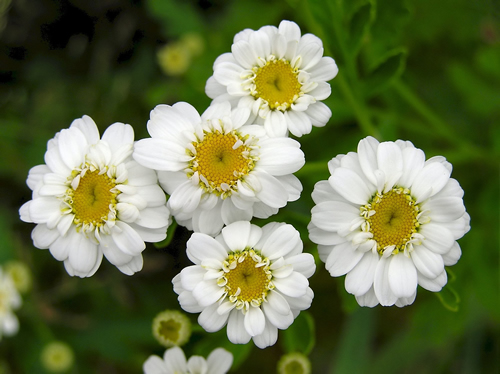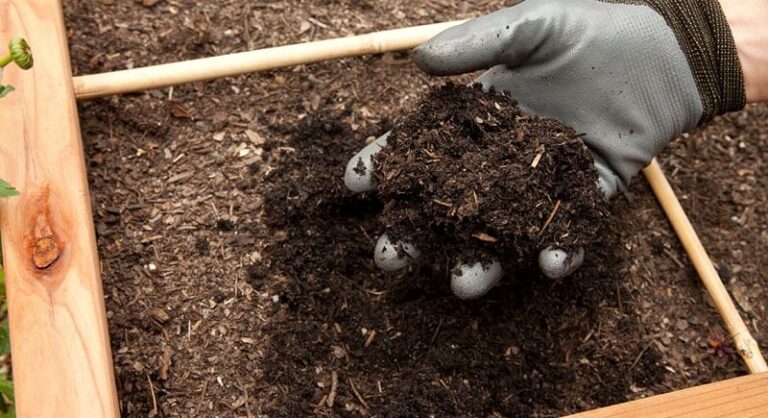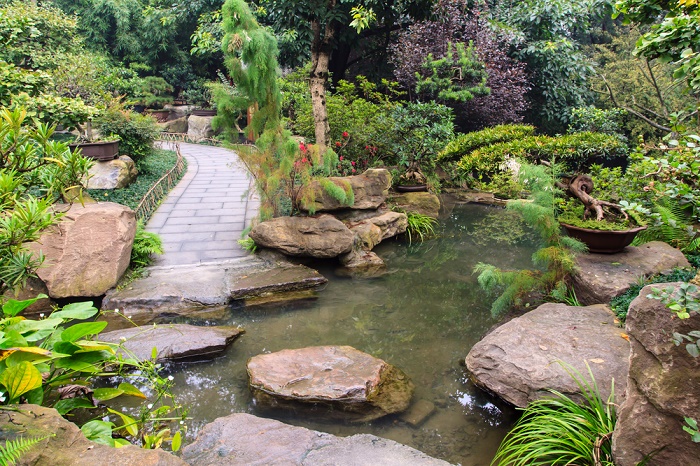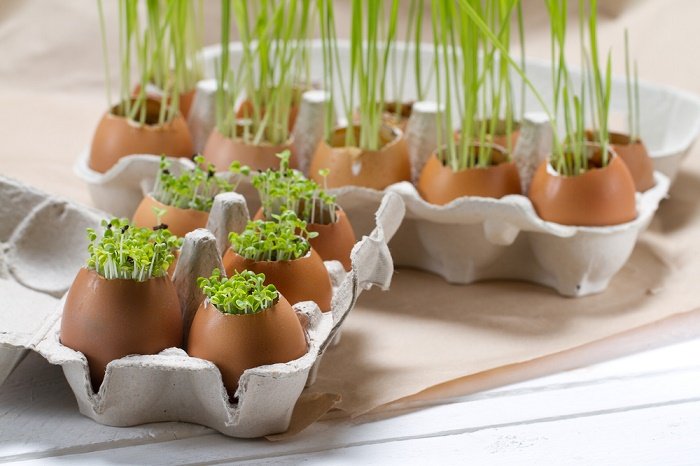Permaculture likes to do things naturally, and exercise the initiative to make use of the resources at its disposal to achieve our goals, such as creating repellants such as natural and homemade fungicides and pesticides for the garden.
How to make natural and homemade fungicides and pesticides for the garden.
Ever wonder what farmers of hundreds of years ago were doing to combat crop pests? Long before the invention of harmful chemical pesticides (yes, the kind that is linked to cancerous cell activity), farmers used various remedies to eliminate insect pests from their garden plants.
The following list offers you some of the most used and effective insecticides in permaculture. They are all natural, organic and inexpensive methods for making natural pesticides for your home garden.
What better way to do that than to make your own natural pesticides and fungicides, plant tonics, and other helpful concoctions from the comfort of your home.
Organic white oil as a natural pesticide.
The white oil is an easy and inexpensive to prepare pesticide. It is used to control aphids, mealybugs, citrus miners, mites, and caterpillars on roses, ornamentals, citrus, and other fruit trees.
The white commercial insecticides sold in garden stores are petroleum-based, so they are quite expensive, and they also contain the kinds of things that you really don’t want to spray around your garden.
White oil is a traditional vegetable oil and has been in use for around two centuries. It is one of the most effective and effective natural pesticides.
How to make white oil.
You will need to:
- 2 cups vegetable oil.
- 1/2 cup of pure liquid soap (pure castile soap, made from olive oil if you want to keep everything natural).
- Empty jar or wide-mouth bottle.
- Plastic spray bottle.
Pour the vegetable oil and liquid soap into a bottle or jar and shake until the mixture turns white.
This is the white, concentrated oil that needs to be diluted with water to use it. Add 10 ml per liter of water (two tablespoons per liter of water), put in a spray bottle and shake well. Now you can spray your plants or trees. Store in a cool and dry place, the shelf life is approximately three months from the day it is made.
Note – use during temperate weather, if you use it when the temperature is around 30 degrees centigrade or higher, it can damage your plants, as, like oil, it will clog the pores of the leaves. In the morning or afternoon, it is a good time. Also, it should not be used on plants that have hairy or soft leaves, as it will burn their leaves. Spray on both sides of the leaves, branches, and bark so you can reach pests wherever they may hide.
How does white oil work?
The white oil works by coating the insects in the oil, blocking their respiratory pores, which drowns them. Because it works through physical suffocation, and not through chemical action, insects cannot develop resistance to it. If you don’t have liquid soap, don’t despair, use whatever is available.
If you have a bar of castile soap (preferably with olive oil), here is the alternative recipe:
How to make white oil (with a bar or soap).
You will need to:
- 1/2 cup vegetable oil.
- 1 cup of water.
- 1 tablespoon natural soap – finely grated from a bar of soap.
- 1 plastic spray bottle.
Process:
- Grate the natural soap, and put a tablespoon of the grated in the spray bottle.
- Pour the vegetable oil and water into the spray bottle.
- Shake the spray bottle well. Spray your plants or trees.
Insecticide spray for slugs and snails.
You can make a simple insecticide spray at a very low price that eliminates slugs and snails without affecting your plants. This spray simply consists of 1 part ammonia to 4 parts water in a spray bottle, with a little liquid soap to better stick to pests. One or two jets and they dissolve in a green foam mud. One of the simplest natural pesticides to prepare.
The slugs will go away instantly as they don’t have a shell to protect themselves, the snails may need a second spray to coat them well in the spray. Adjust the nozzle of the spray bottle for narrow stream so that you can precisely target and give them a good dose of the substance.
You will need to:
- Plastic spray bottle.
- 1 teaspoon (5 ml) of pure liquid soap (organic castile soap made from olive oil if you want to keep everything natural).
- 100 ml cloudy ammonia.
- 400 ml of water.
Use a 500 ml spray bottle with metering, which makes the process very easy. Pour 100 ml of cloudy ammonia into the spray bottle, add 400 ml of water, add a splash of liquid soap to make the mixture adhere better to pests. Shake the bottle lightly, and you’re ready to hunt down these nasty garden mollusks.
The best time to hunt these critters is only when it gets dark, or after it has just rained, which is when they crawl out to find food. Grab a torch / flashlight and look for them, if you see them, spray them. Do this for several nights and this will cause a serious decline in your population.
Natural pesticides from tansy and chrysanthemum.
This pesticide is a natural pyrethrum insecticide that comes from the pyrethrum daisy ( Tanacetum cineraria folium ). This plant is a common companion plant in organic gardens, and feverfew (Tanacetum parthenium), also from the daisy family, is an herbal remedy for headaches, and also has pest / insecticidal repellent properties.
These flat compound flowers also attract beneficial predatory insects such as hover flies that feed on aphids and other insect pests. It is among the most used pesticides in permaculture.
You will need to:
- 2 parts tansy flowers.
- 1 part chrysanthemum.
- Kerosene or mineral oil.
- 2 drops of sesame oil.
To make this spray:
- Cut the flowers.
- Cover with kerosene or mineral oil.
- Soak overnight in a dark place.
- Strain the liquid.
- Dilute one part of liquid in six parts of water.
- Add the sesame oil and drizzle.
The effectiveness of the spray can be increased by adding additional ingredients to make it adhere better to your intended target, by using either a wetting agent or a spreading adhesive, as described below.
- Wetting Agent – pure soap flakes used at 10 g per liter of spray, or liquid soap at 10 ml per liter of spray, this is an effective wetting agent for the above spray.
- Spreading tackifier – Coconut oil used at 5 ml per liter of spray is an effective agent for spreading the formula above.
Natural pesticide of chili and absinthe.
This is a multipurpose spray that can be used both to spray plants to repel opossums, rabbits, snails and slugs and to spray plants to kill aphids, bean flies and whiteflies.
You will need to:
- 1 cup hot chili peppers, hotter varieties work best.
- 1 cup absinthe leaves.
- 6 cups of water.
To make this spray:
- Mix the chiles and absinthe with 1 cup of water.
- Add 5 cups of water and bring to a boil.
- Let it rest for an hour.
- Strain and spray.
Caution: Do not allow it to come into contact with your eyes or skin. The effectiveness of the spray can be increased by adding additional ingredients to make it adhere better to your intended target by using either a wetting agent or a spreading adhesive, as described in the example above.
This homemade fungicide is effective against mites and aphids. Excellent among natural pesticides for the garden.
You will need to:
- A part of the coriander plant.
- An equal part of water.
To make this spray:
- Boil coriander and water for 10 minutes.
- Strain and the spray are ready.
The effectiveness of the spray can be increased by adding additional ingredients to make it adhere better to your intended goal by using either a wetting agent or a spreading adhesive, as described above.
Natural repellent with oil and pennyroyal for ants.
To use this ant repellent, simply add pennyroyal oil to the ant tracks and their nests.
You will need to:
- 1/2 cup pennyroyal leaves.
- 1 cup safflower oil.
To make this oil:
- Combine pennyroyal and oil in a blender.
- Bottle and cap.
Leave this mixture for a day in a warm place, and it is ready to use.
Natural insecticide of chamomile, chives, elderberry, radish.
This fungicide is good for treating fungus, blackhead, wetness, and mold.
You will need a selection of sheets of:
- Chive.
- Elder.
- Horseradish.
- Casuarina.
- Chamomile flowers.
To make this spray:
- Cover the leaves and flowers with water.
- Boil them.
- Let stand 30 minutes.
The Spray is now ready to use. The effectiveness of the spray can be increased by adding additional ingredients to make it adhere better to your intended goal by using either a wetting agent or a spreading adhesive, as described above.
Fungicide and pesticide with elderberry.
This spray is especially good at eradicating aphids , caterpillars, thrips, and blackhead.
You will need to:
- 500 g of elderberry leaves.
- 5 liters of Water.
To make this spray:
- Cook over low heat and leave in the water for 30 minutes.
- Replace lost water in the form of steam.
- Strain and spray.
The effectiveness of the spray can be increased by adding additional ingredients to make it adhere better to your intended target, by using either a wetting agent or a spreading adhesive, as described above.
Borax ant trap.
Ants can be a major pest in the garden because the aphids “farm” protects them in their nests, then takes them to the plants, and collects the honeydew they excrete when the aphids feed on the plant sap. Ants defend these pests from predators as well.
The simplest way to break the cycle is to apply a toxic bait to the ants that does not kill them instantly, they take them back to their nest and feed the rest of the ants there, and little by little it destroys the entire colony.
The Borax is a natural mineral salt, is one of the natural pesticides used effectively but with some care because it is toxic when ingested, is not recommended for use in homes with children and pets.
You will need to:
- 4 teaspoons borax.
- 700 ml of water.
- glass jar with screw cap.
- small jar.
- cotton.
To make this bait:
- Mix 1 cup of sugar, 4 teaspoons of borax, and 24 ounces (700 ml) of water in a glass pitcher with a lid.
- Shake well until you can see that all the crystals have dissolved.
- Now put a cup of this mixture in a small jar that you have filled halfway with loose cotton wool.
- Screw the cap back on tightly, seal around the cap with weather resistant tape, and using an awl, poke a few holes in the center of the cap.
- Put this near the nest entrance or wherever they have made a path to your house.
The key is that the ants will get into the jar to eat the sugar and will return to the nest and transmit it to the rest of the colony. If you find a lot of dead ants in the jar, dilute the solution and try again. With proper mixing, the colony can be destroyed in a few weeks. However, it takes the queen’s destruction to completely eradicate a colony. Keep this away from children and pets.
Earwig bait.
This is a trap for earwigs that are buried in the ground with a small cover over it to prevent the trap from filling with water when it rains. It uses the soy sauce as the attractant, and the oils ensure that when they fall, they drown in the container.
You will need to:
- 2 tablespoons (30 ml) soy sauce.
- vegetable oil.
- any small container that is reasonably deep, such as a small jar, plastic yogurt container, can of tuna or the like to cover the small container, that is reasonably larger than the container, such as a lid on a large jar (large lids plastic work well).
Earwig bait can be made as follows:
- In a small container (small yogurt container, small jar, tuna can, large pill bottle, or anything that is deep enough), add 2 tablespoons (30 ml) of soy sauce, then pour in the oil vegetable to form a layer about 6 mm deep.
- Another way to do it is to add water and fill the container to 1/3 of its depth, add the soy sauce, then add enough oil to cover the surface in a thin layer.
- Now bury the container in the earth up to its top, but leave a little out so that the surrounding earth does not fall into the trap and fill it, which makes it ineffective. Put some kind of cover or lid over the trap so that it does not flood and wash when it rains. Use a cover larger than the container so that it extends reasonably around the edge of the small container to act as a type of shelter. You can hold the lid with 4 stones around the container so that it leaves a small gap all the way between the container and the lid for the earwigs to pass under.
- Leave it there for a few days and it will fill it with earwigs. You can dispose of the resulting compost, and then refill the container for the next round.
This selection should keep your garden out of trouble, and everything is quite natural, and best of all, it is cheap and easy!









